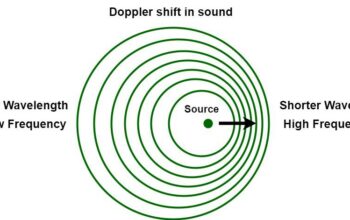In the realm of contemporary physics, the enigmatic phenomenon of quantum entanglement has captivated the imagination of scientists and philosophers alike. The title “Sharper Than Ever: Entangled Photons Break the Blur” encapsulates the significance of this quantum behavior, which transcends classical limitations of measurement and perception. This exploration seeks to illuminate the intricate properties of entangled photons, elucidating the reasons for their remarkable characteristics and the implications this holds for our understanding of reality.
Quantum entanglement, originating from the foundational principles of quantum mechanics, manifests when two or more particles become interconnected in such a manner that the state of one particle instantaneously influences the state of another, regardless of the distance separating them. This non-local correlation poses fundamental questions regarding the nature of reality and the limitations imposed by classical physics. By breaking the conventional “blur” of perception, entangled photons exemplify a purity of correlation that challenges our intuitive understanding of separation and independence.
Observations of entangled photons stem largely from their roles in quantum optics. When photons emerge from a source such as a pair of non-linear crystals, they can be generated in entangled states. This phenomenon is often exemplified by polarization entanglement, where the polarization state of one photon is dependent upon that of its partner. Measurement of one photon’s polarization instantaneously dictates the polarization state of the other photon, a result that is comprehensively detailed through Bell’s theorem. This theorem establishes a limit to the correlations that can be attributed to classical physics, thereby reinforcing the uniqueness of entanglement as a significant quantum resource.
The implications of entangled photons extend far beyond mere curiosity. Their distinct properties render them pivotal in the realms of quantum information science and quantum computing. For instance, entangled photons are harnessed in quantum key distribution (QKD) protocols, which promise unparalleled security for encrypted communications. The notion of utilizing entanglement for secure data transmission invites us to reconsider not only the mechanics of communication but also the philosophical questions surrounding the concept of information itself. Here, the alignment between quantum mechanics and information theory fosters a fertile ground for interdisciplinary dialogue.
Moreover, the photonic entanglement can be witnessed in experimental settings designed for tests of the foundations of quantum mechanics. Notably, experiments aimed at testing the validity of locality and realism, such as those conducted by Alain Aspect in the early 1980s, have consistently affirmed the predictions made by quantum mechanics—thereby challenging classical ideals. The violation of Bell inequalities in such experiments has kindled further exploration into not only the nature of quantum correlations but also the intrinsic characteristics that distinguish the quantum realm from our quotidian experiences.
To delve deeper into the reasons for our fascination with entangled photons, one must recognize the profound philosophical implications inherent in quantum mechanics. Quantum entanglement challenges our understanding of separateness, suggesting that connectivity and relations may underpin the fabric of reality. Such realizations distort the framework through which we interpret existence and engender a sense of wonderment regarding the interconnectedness of all things. This allure lies not merely in the empirical success of quantum theory but also in its capacity to evoke deep reflections on the nature of knowledge, existence, and causality.
Furthermore, the application of entangled photons in quantum technologies has exponentially increased their prominence within various scientific narratives. Quantum computing, augmented by the principles of entanglement, offers a paradigm shift in computational capabilities, potentially addressing problems beyond the scope of classical computation. The creation of coherent qubits leveraging entangled photon states opens pathways to exploring superposition and entanglement as pivotal elements driving advancements in computational efficiency and problem-solving capacity.
On the experimental frontier, efforts to manipulate and harness entangled photons are steadily gaining momentum. Photonic quantum networks, in which entangled photons serve as a means of transmitting information between distant nodes, draw on the principles of entanglement to facilitate quantum communication. The prospect of creating a quantum internet, where entangled photons underpin the transmission of information, crystallizes the interplay between theory and application while promising a transformative impact across various fields.
In summary, entangled photons serve as a profound testament to the capabilities of quantum mechanics. Their ability to “break the blur” of classical limitations evokes a sense of intrigue and exploration that has far-reaching implications. From their foundational role in quantum optics and information science to their philosophical interpretations of connection and existence, entangled photons compel us to question not just what we perceive, but how we understand the universe at its most fundamental level. The journey into the realm of entangled photons exemplifies the elegance of quantum mechanics, embodying the convergence of theory, experiment, and philosophical inquiry. This complex interplay encourages ongoing investigation, fostering an appreciation for the intricacies of reality and the profound mysteries that still abound in the quantum domain.










